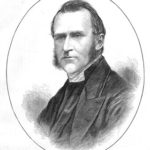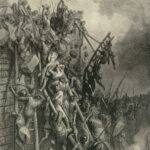Scot McKnight’s article “The warning passages of Hebrews: A formal analysis and Theological Conclusions” reviews the warnings of apostasy in Hebrews 2:1-4, 3:7-4:13, 5:11-6:12, 10:19-39 and 12:1-29. McKnight identifies four alternative interpretations of the warning passages: hypothetical warnings, false believers, the covenant community and his view, true believers. McKnight identifies four aspects of the passages: “in each warning passage we find: 1) the subjects or audience who are either committing or in danger of committing 2) the sin that leads to 3) the exhortation which, if not followed, leads to 4) the consequences of that sin.” McKnight argues that studying the four warnings in unison helps define each of these four aspects. He sees the audience as true believers, the sin as apostasy from the faith, the exhortations as “persevere in faith and heed the word of God in obedience” and the consequence as eternal damnation. McKnight then engages Nicole’s explanation of Hebrews 6:4-6 (who claims those warned were not truly regenerate) and shows Nicole’s approach is eisegesis, not exegesis. McKnight also engages Verbrugge’s view (that the passage relates to a group) and notes the individual language of the passage. Finally, McKnight draws two theological conclusions from his study: 1) the warnings teach that faith can be lost, but not that salvation can be lost (since the author of Hebrews views salvation as future) and2) only those who have apostatized need to fear having lost their salvation.
The article is a bit out of order, but it’s all there. Pages 13 to 15 mistakenly come before pages 11-12 in this file. Here’s the correct order to read it in, with the article page numbers in parenthesis: 1-10 (21-39) -> 13 to 15 (40–45) -> 11-12 (46-49) -> 16-20 (50-59).






Leave a Reply